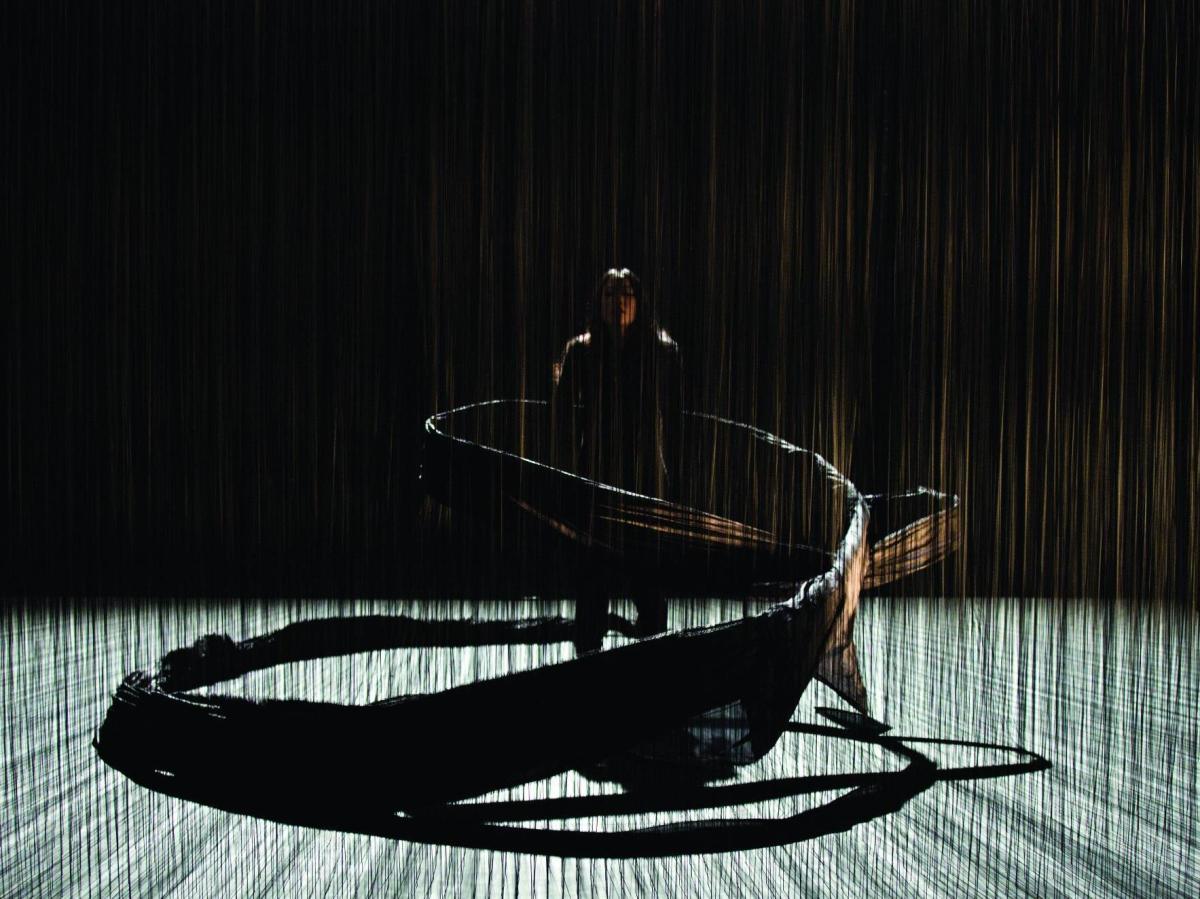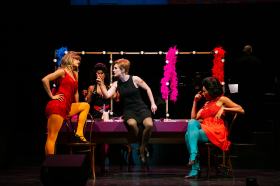Photo credit: Aglae Bory
Described by French choreographer Aurélien Bory as ‘the portrait of a woman,’ specifically Tokyo-born dancer Kaori Ito, Plexus is a compact, richly realised but strangely passionless work positioned at the nexus of dance, circus and visual art.
It begins in darkness, from which Ito emerges clad in a short shift to stand before a softly undulating backcloth, as black as the midnight sea. Her initial movements are near-mechanical spasms, the precise lighting drawing our attention to the thrust of an arm and the shadow it casts, the twitch and shake of her head. In contrast, a contact microphone which Ito presses to her chest, her stomach, her neck, allows us to hear the distinctly un-mechanical sounds of her heart, her pulse, the wet squirm and gurgle of the body in all its abject inner beauty.
Thereafter Ito and backcloth alike are pulled through a distinctly yonic aperture onto the set proper – two slab-like platforms, one suspended high above the stage and connected to its lower counterpart by thousands of shimmering, slender cables, creating a complex cage of strings through which the woman struggles, marches and sometimes falls – only to be caught and held aloft by the forest of threads around her.
Throughout the work, Ito is simultaneously supported and constrained; sometimes a marionette, at other times the puppeteer. As she dances, marching across the stage with hands held before her like a ship’s prow and feet stamping, microphones beneath the lower platform echo and amplify her every movement and gesture: footsteps boom like canon-shots, cables creak like splintering glaciers and ripple and sing with tension, accompanied by Joan Cambon’s potent score.
Later, emerging from shadow, Ito weaves cloth through the cables which alternatively hold and hinder her, created a looped organic structure which soon collapses amidst thunderous explosions of sound, recalling the all-too-brief ebbing of life and the fragility of civilisation. Next comes a remarkable coup de théâtre – a spectacular moment of image-making which provoked gasps of astonishment and delight across the Heath Ledger Theatre.
Judged as a work of visual art, Plexus is exquisite. Arno Veyrat’s lighting design alternately slices and fillets the set – conceived by Pierre Dequivre and constructed by Atelier de la fiancée du pirate – rendering the taut strands and cables into silver slivers of frozen rain before flooding them with rich golden light, in which Ito is silhouetted, suspended, frozen like an insect in amber.
But dramatically, there’s almost nothing here. Plexus is coldly exquisite, a work which one can admire intensely while sitting quiet and unmoved. Bory clearly wants his audience to marvel at his image-making and at Ito’s flexibility, strength and poise; but while his production’s striking and singular vision is easy to admire, it’s hard to love such a coolly dispassionate work.
Rating: 3 ½ stars out of 5
Plexus
Created by Aurélien Bory for Kaori Ito
A Compagnie 111 production
Heath Ledger Theatre, State Theatre Centre of WA
17 – 20 February
Perth International Arts Festival 2016
11 February – 6 March
www.perthfestival.com.au
Richard Watts travelled to Perth as a guest of PIAF.






